


Nitration runaways
Many home chemists are particularly interested in nitrating organic compounds. Such nitrated compounds usually have interesting energetic properties. Some of these even have explosive properties, others may be fast burning. Nitrating organic materials frequently is done with nitric acid, or a mix of concentrated nitric acid and sulphuric acid.
Some compounds can be nitrated fairly safely. An example of such an interesting and relatively safe nitration is nitration of cellulose. Other organic compounds are very hard to nitrate safely. They require very good cooling or some other means of moderating the reaction. Most nitrations are exothermic and if no special precautions are taken, a so-called runaway occurs.
A runaway is the heating up of a mix, with the accompanied speeding up of the reaction, resulting in even stronger heating of the mix, giving an even faster reaction and so on . . . . . . . . . . finally, the material may explode, or jump out of the reaction vessel. Runaways are highly undesirable and quite dangerous.
In this experiment, a small-scale runaway is produced on purpose, just in order to show the violence of such a condition.
The following procedure almost certainly leads to a runaway, almost immediately after adding the organic compound:
- Take a small volume of concentrated nitric acid (anything better than 50% by weight is suitable).
- Take the same volume of concentrated sulphuric acid (drain cleaner quality is sufficient for this experiment, as long as concentration is better than 90% by weight).
- Add the two acids to each other in a single test tube (careful, quite some heat is produced) and carefully shake in order to mix the acids.
- Add a few drops of isopropyl alcohol (normal denatured ethanol also works, but results are somewhat less predictable). This produces a runaway with a certainty, close to 100%. Especially, if this is done, while the mixed acid still is fairly warm, then it definitely will result in a runaway.
A nitration runaway is accompanied with production of a lot of nitrogen oxides. This can be observed as a dense brown plume, coming out of the reaction vessel.
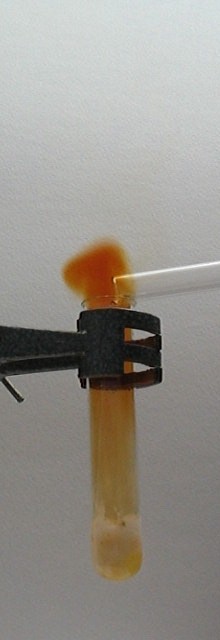
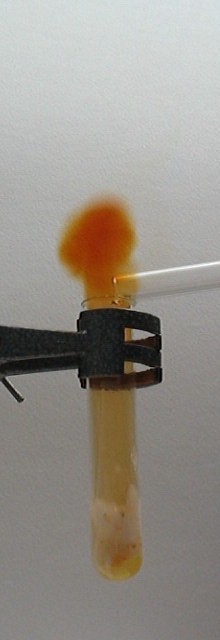
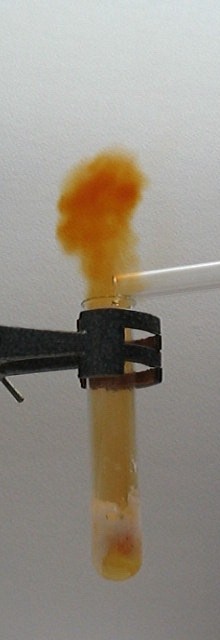
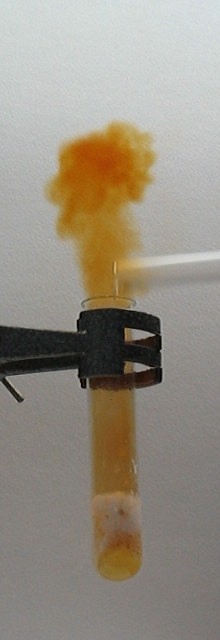
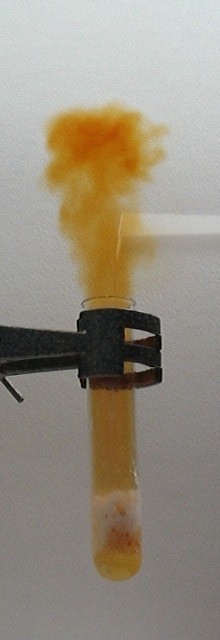
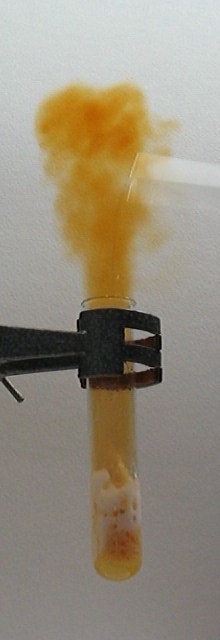
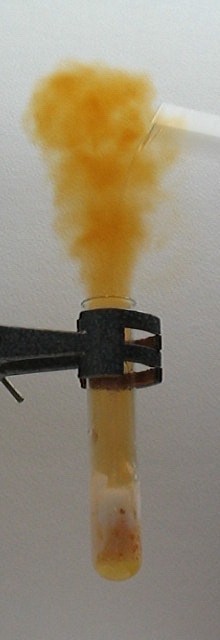
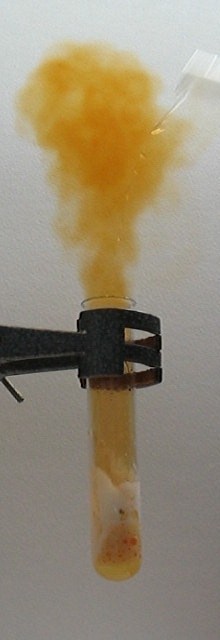
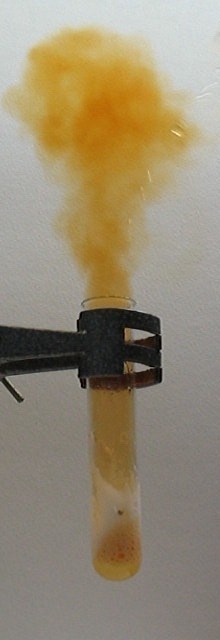
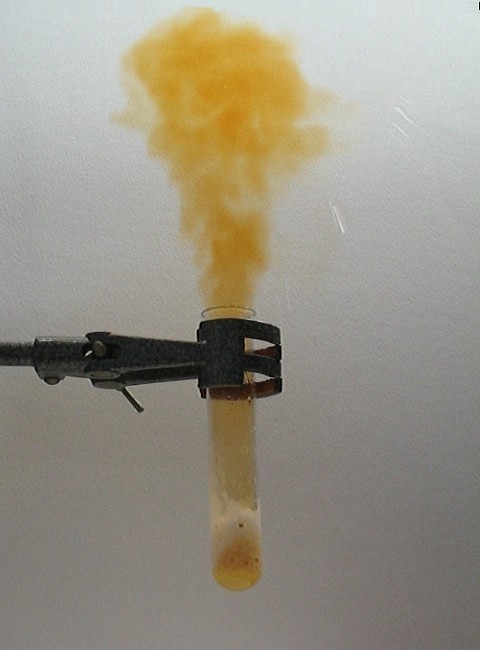
A video of the runaway reaction was made as well. The video nicely shows the violence of the reaction, and also has sound: runaway.avi. Download size is approximately 5 MByte.
This is a nice experiment, but do this outside or in a fume hood. The nitrogen oxide is insidiously toxic and very corrosive. Use very small amounts of isopropyl alcohol. Only add a few drops at a time, otherwise the reaction will become so violent, that everything erupts out of the test tube.